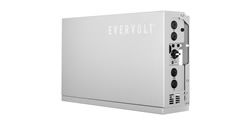EM-POWER EUROPE: DIGITAL TWINS OPTIMIZE GRID OPERATION
Digital twins change the way in which distribution system operators plan, operate and monitor their grids. This technology can enhance efficiency, reduce costs and improve grid stability, which is essential in light of the growing share of renewable energy in the power mix.
Virtualization: The next step in substation evolution
Here, Jurgen Resch, Industry Manager for Energy at automation supplier COPA-DATA, explores the concept of virtual substations, the benefits and challenges of virtualization in PAC, and how software supports transformation.
EM-POWER EUROPE: NEGATIVE ELECTRICITY PRICES ARE NO CAUSE FOR CONCERN
First of all, negative electricity prices are not the end of the world. In fact, they show that the electricity market is working and that the supply of climate-neutral, renewable electricity exceeds momentary demand.
Panasonic's Solar Module and Battery Storage Solutions
Whether investing in an off-grid system or a hybrid solar system, homeowners can achieve independence from the grid and finally have better control of their energy consumption.
The Future of Renewables Depends on Grid Upgrades
Much of the world is transitioning to green energy, and electricity demand is growing to record levels, reducing greenhouse gas emissions and combating climate change. It is also straining the electric grid. How can governments adapt?
Combined 'SuperLab' Demonstrates Unique Hybrid Power Plant
For a 60-minute period in January 2023, a power plant like no other existed in the U.S. Mountain West. It contained a solar array, lithium-ion battery, hydrogen electrolyzers, and a nuclear reactor, all coordinating with each other to provide reliable power.
Doing the math on a solar-powered future
Physicist Anders Carlsson, at Washington University in St. Louis, and Sid Redner of the Santa Fe Institute have created a new mathematical model to describe the most reliable, efficient and cost-effective way to harness solar power.
Chung-Ang University Researchers Use Deep Learning to Develop a Forecasting Model for Efficiently Managing Electric Grids
It employs a long short-term memory network and incentive-based demand response program to predict uncertainties in renewable energy sources implemented in microgrids, their energy demand, and market prices.
Why Do We Need to Make the Grid More Resilient?
As more areas of the United States and elsewhere experience prolonged periods without it, demands for a realistic grid modernization strategy have grown. Here's why many people are rightfully so concerned.
Records 1 to 9 of 9
Featured Product

Nature's Generator MyGrid 10K
A 10,000W plug & play whole-home generator with a 10kWh LiFePO4 battery for reliable backup power. Features easy setup, flexible 120V/208-240V input, and solar/wind charging. Expandable with extra batteries or solar panels, and can pair two units for 20,000W for even larger energy needs. Powers your home during power outages, reduces electricity costs, and supports sustainable energy.



.jpg)

.jpg)

.jpg)

